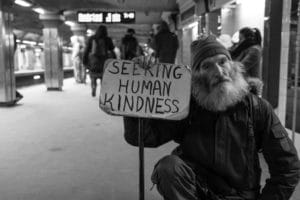Where to Begin
All I have to do is tell my story?
Attending conferences has played a beneficial role in my understanding of the importance of my work. I believe that in order to succeed at what you are doing you need a clear understanding of a shared goal but also an internal motivation to achieve that goal. I am also aware that the best way for me to learn, and retain what I have learned, is to make connections. I hate to be the bearer of bad news, but listening to someone explain the FDA review process isn’t exactly what I call engaging. What is engaging to me is listening to the story about a family’s role in this process and the experiences they have gone through to get to that point of a clinical trial.
It all started with a story
Storytelling has been used throughout history. It was first used as a way to pass on ancestral stories before a written language. Once a written language was developed, those stories expanded to include a vast array of new experiences including better understanding of medical developments through practice and at times trial by error. To clarify, storytelling has allowed us to grow as a species, yet sometimes we forget about this and focus on facts instead of experiences.
Embracing Stories Through Books
At some point along the way I was introduced to a children’s book about rare disease. Rare is Everywhere, by Deborah Katz, is a collection of animals that experience rare diseases and in turn have physical traits that differ from the rest of their species. This use of storytelling allows children to understand that not only are rare diseases present throughout the world, but also that they (the animals and the children with rare diseases) are beautiful despite this. Children need to be taught acceptance and understanding; it is paramount that we continue creating stories that they can be part of and fall in love with.

Connecting with Stories Through Film
Selections from DISORDER: The Rare Disease Film Festival at Biotech Week Boston was an afternoon filled with storytelling and more importantly learning. The Voices of Siblings in Rare Disease expanded the story to non-caregiving family members. This Is Michelle dove into the perseverance and hope that is needed to keep fighting a disease that can be life-shattering. Tess is Not Alone: a USP7 Story expressed how important a sense of community can be and what a profound effect networking (through social media) can have on the path towards a cure. This was only the beginning of the storytelling that went on that day and the real emotions that could be felt while watching them.
Storytelling makes the experiences of a clinical trial personal. It takes away the “possible side effects” and turns them into “while engaging in this treatment, I experienced …”. It makes the need for patient engagement more visible. A benefit to sharing your story is that others can connect and “normalize” their own experiences, but also that the storyteller is able to share their pain, their experience, and their triumphs to help others. The benefit is two-fold.
These films weren’t dramatized television shows or novels, they were real people pouring out emotions as they discussed their struggles in life as they reached out for support. Through sharing these stories, they were able to create an awareness of a Rare Disease that they experience daily but also that is almost unknown to the general population.
Telling My Own Story
This past week I attended The Power of a Story, a conference that was held through Harvard Medical School which aimed at educating attendees about the impact of sharing medical stories. I thought I had already opened my eyes to the power of storytelling, but in fact I was missing a lot. I overlooked the importance of understanding my own story, my own perceptions, and my own listening skills. It became very apparent as the day progressed that telling my own story was just as important as giving the opportunity for someone to tell theirs. This didn’t need to happen in public, it needed to be an internal, deeper understanding of my own lived experiences and how those impact my scope.
The day started with an amazing example of strength, determination, and drive through the eyes (and artwork) of Elizabeth Jameson. If you don’t know who she is or her work, it’s worth looking into. Her talk left me so emotional that I struggled to get through the warm-up exercise that followed. The morning was filled with discussions on understanding the structure and empathy needed to bring out and shape a powerful story. But the afternoon included a time to shape our own story.
I was able to attend The Art of Seeing with Cynthia Tokos, MPA. We were given the task of taking ten “pictures” (we had a matte board and a sketchpad) of the world around us that connected with an essence of our personality. We then had to use these “pictures” to create a storyboard of our lives. I found myself becoming increasingly emotional as I built my storyboard and connected the essence of who I was and started to shape the beautiful aspects of my personality that make me who I am. As human beings, we rarely take the time to self-reflect on what makes us wonderful. We are quick to critique and judge our actions (and those of others) but we don’t make the effort to visualize the beauty in ourselves and what shapes our story. This was important to me, looking at the flaws and the beauty as a whole.
Just Listen.
As I have learned to embrace my own story I have had a profound realization in the power behind storytelling. We are social beings and stories are what connect us. Individuals with rare diseases, or any disease, need to be heard and acknowledged for having the power that they do. We need to take the time to listen and accept but when possible, we also need to share our own story.

Posted by Jamie Roger
[social_warfare]
